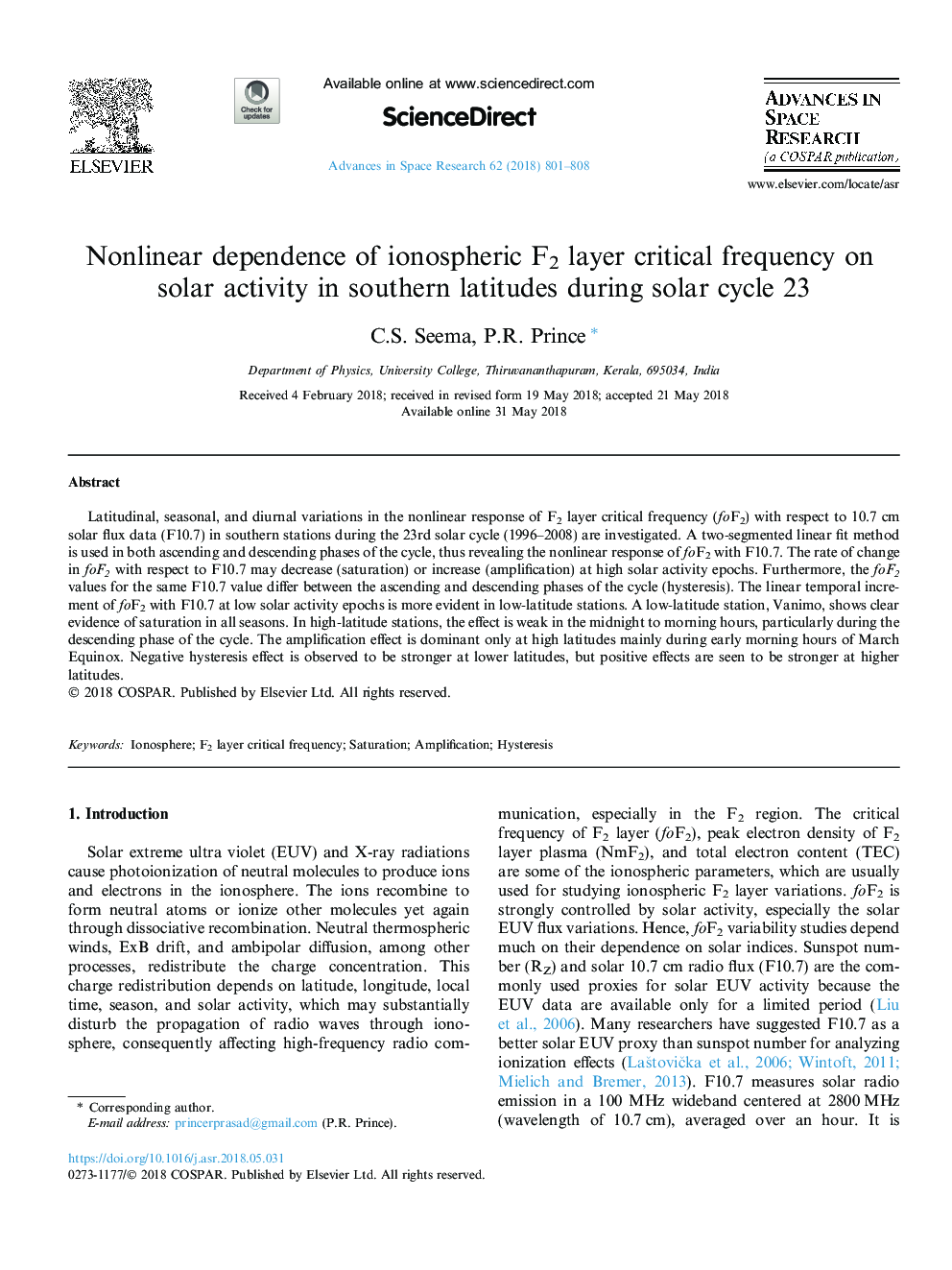| Article ID | Journal | Published Year | Pages | File Type |
|---|---|---|---|---|
| 8131681 | Advances in Space Research | 2018 | 8 Pages |
Abstract
Latitudinal, seasonal, and diurnal variations in the nonlinear response of F2 layer critical frequency (foF2) with respect to 10.7 cm solar flux data (F10.7) in southern stations during the 23rd solar cycle (1996-2008) are investigated. A two-segmented linear fit method is used in both ascending and descending phases of the cycle, thus revealing the nonlinear response of foF2 with F10.7. The rate of change in foF2 with respect to F10.7 may decrease (saturation) or increase (amplification) at high solar activity epochs. Furthermore, the foF2 values for the same F10.7 value differ between the ascending and descending phases of the cycle (hysteresis). The linear temporal increment of foF2 with F10.7 at low solar activity epochs is more evident in low-latitude stations. A low-latitude station, Vanimo, shows clear evidence of saturation in all seasons. In high-latitude stations, the effect is weak in the midnight to morning hours, particularly during the descending phase of the cycle. The amplification effect is dominant only at high latitudes mainly during early morning hours of March Equinox. Negative hysteresis effect is observed to be stronger at lower latitudes, but positive effects are seen to be stronger at higher latitudes.
Related Topics
Physical Sciences and Engineering
Earth and Planetary Sciences
Space and Planetary Science
Authors
C.S. Seema, P.R. Prince,
